[/caption]
(Editor’s Note: Ken Kremer is at the Kennedy Space Center for Universe Today covering the flight of Discovery)
Beautiful billowing clouds of all shapes, sizes and appearance always form from rocket exhaust plumes following a mighty rocket launch, whether it’s from the Space Shuttle or an unmanned rocket like the Atlas for the SDO launch (see my exhaust plume photo).
Well I’ve never witnessed anything like the magnificently colored clouds following Monday’s (April 5) predawn launch of Shuttle Discovery. They are known as “Mother of Pearl” clouds – according to Jacob Kuiper, Senior Meteorologist with the Royal Netherlands Meteorological Institute (KNMI).
Kuiper and myself observed the launch together with journalist Rob van Mackelenbergh (Dutch Society for Spaceflight, NVR) at the Kennedy Space Center (KSC) Press Site, located across the street from the iconic Vehicle Assembly Building where Shuttle’s are prepared for launch. See our STS 131 Launch day photo mosaic below of the day’s thrilling events.
At first the wispy clouds were nearly all white and set against the still dark sky. Then the sky overhead was suddenly lit on fire with a growing multitude of these pastel colored “Mother of Pearl” clouds – also called “Nacreous” clouds.
“The Mother of Pearl Clouds began turning from white to hues of pink and yellow. Starting about 10 minutes after the launch of Space Shuttle Discovery, its exhaust plume turned into a magnificently colorful panorama. Generally, this continues until about 40 minutes or more after blast off”, Kuiper told me as we stood next to the world famous Countdown clock and gazed in awe at the colored clouds above.

“Launching northeast in the predawn sky here on the ground means as the shuttle and its exhaust plumes head to orbit they’re going to catch the rising sunlight and that’s what creates the spectacular clouds we saw on launch morning !” KSC spokesman Allard Beutel explained to me.
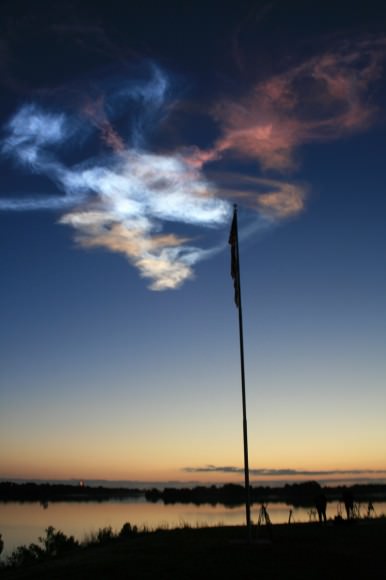
“Atmospheric layers between 15 and 85 kilometers height normally contain very low quantities of water vapor. But the final exhaust product of the Shuttle’s external tank (hydrogen and oxygen) provides an enormous amount of water vapor”, Kuiper said.
“In the very cold atmosphere layers, the vapor turned into a tremendous mass of ice crystals and tiny super cooled water droplets. These crystals reflect and bend the solar rays very efficiently and create a nice spectrum of colors”.
“The lowest clouds, turned pink and orange, because at that height the sun just rises and most rays are a bit more reddish due to a certain extinction of the atmosphere. The higher portions of the exhaust plume hardly experience any extinction,” Kuiper explained.
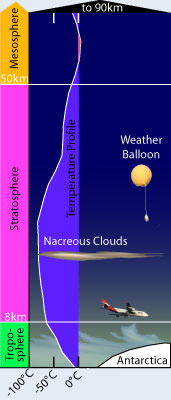
“The yellow/white light of the sun – there a few more degrees above the horizon – is reflected immediately and causes the yellow and white, sometimes blueish colors. In the lowest segment of the atmospheric layers starting around 15 kilometers height, nature is able to form these clouds under very special circumstances. There they are called ‘Mother of Pearl’ clouds”.
“In layers around the Mesopause (about 85 km), clouds sometimes appear in the weeks around June 21 (northerly latitudes). These clouds are called Noctilucent clouds – or NLC. Both types can be produced due to the exhaust plumes from a Space Shuttle launch”, said Kuiper.
By far the largest and most long lasting rocket exhaust clouds derive from the Space Shuttle because it’s the most powerful rocket in the US Fleet – although not for much longer after the shuttle is retired and the US completely loses its Heavy Lift boost capability.
Internet sources: www.knmi.nl, www.weerboek.nl
Earlier STS 131 related articles by Ken Kremer:
Spectacular Radar Failed Belly Flip (Video) and Docking links Discovery to ISS
Antenna Glitch hinders Data Flow from Inspection of Discovery
Discovery Dazzles with Two Dawns in One Day
Discovery Unveiled on Easter Sunday to the Heavens Above
Countdown Clock Ticking for Discovery Blast off on April 5
Soyuz Blasts off with Russian American Crew for Easter ISS arrival
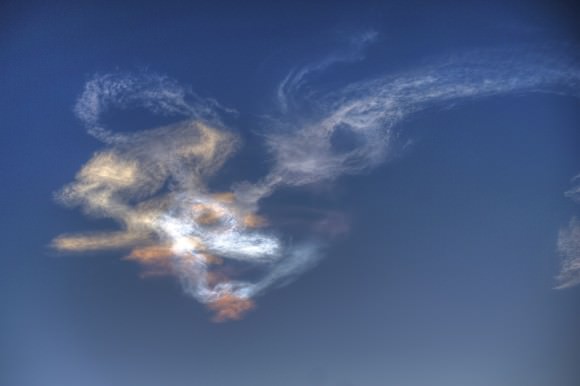
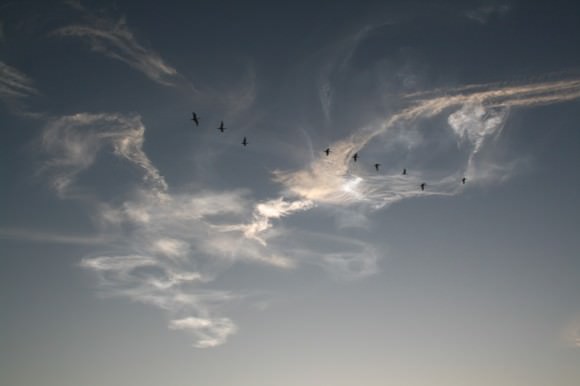
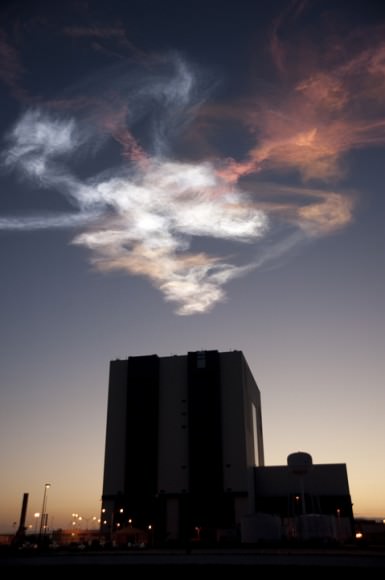

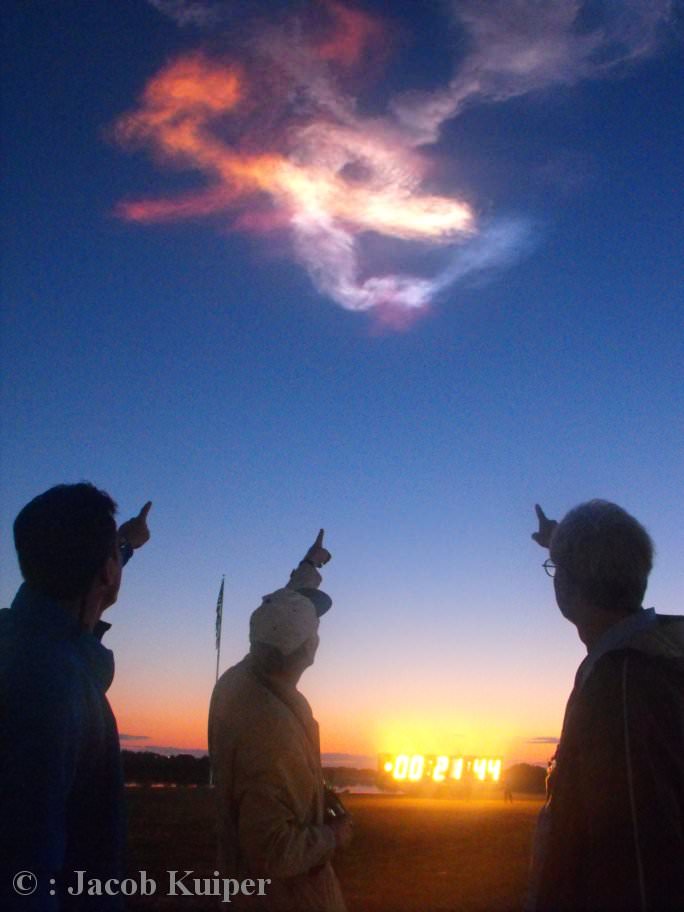
The Photo’s are Great ,Here’s one i took:
http://www.celestronimages.com/details.php?image_id=6055
If we really are seeing a phase shift in USA’s space dominance I just want to say, thanks for the ride NASA